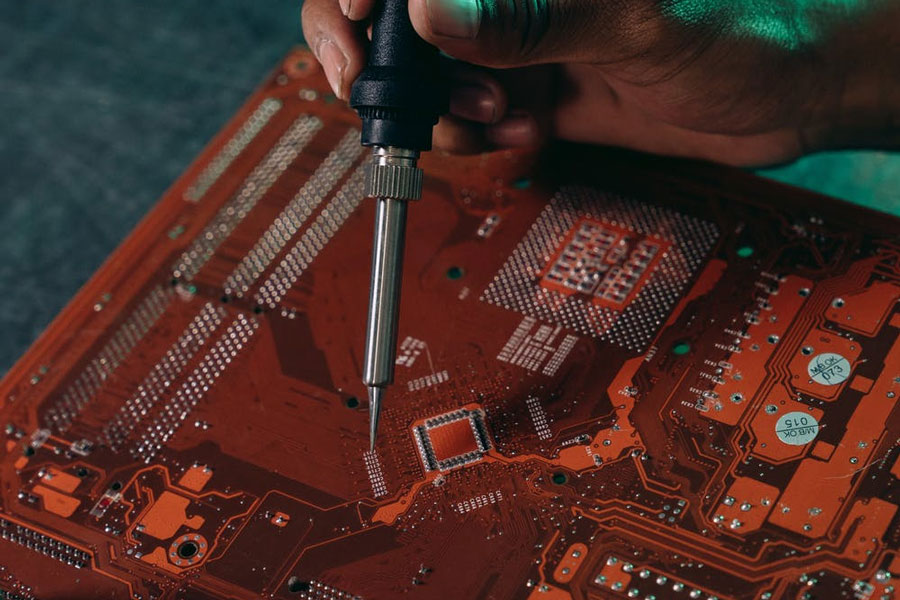Solder Paste is an important component that assists in holding electronic components in place on the PCB board during PCB assembly. Solder Paste is used to create electrical connections and mechanical bonds between printed circuit board pads and surface mount devices.Typically it is made up of powdered solder in a flux paste.
The flux has several important roles to play. These include:
Removing oxidation from metallic surfaces.
Protects components that are to be soldered.
Acts as a temporary low-tac adhesive to hold devices in place till the reflow process is undertaken.
There are a number of factors that affect the performance of solder paste. These include:
Uniformity and Size of Particles in Solder Paste.
Percentage of solder powder in the flux.
Viscosity of the Solder Paste.
Thixotropic Index and Metal Content of Solder Paste.
Reflow Process.
A wide majority of PCB circuit board failures occur on account of issues related to the solder paste process. Hence extreme caution is required when it comes to its application. Particularly as electronic devices get smaller, precision placement becomes increasingly critical. While high-speed pick and place equipment can accurately place components, if the soldering process isn’t carefully done, it affects the efficacy of the final device. A solder paste that is too thick or that is not applied right will lead to a poor connection. Solder paste applied in excess can also result in bridge shots, while if it is too light it will lead to inferior connections.
Properties of solder paste
Some of the important properties of solder pastes include:
Viscosity – Simply put, it is the tendency to flow. If the metal content increases, the viscosity goes up. Similarly, viscosity has a strong correlation with temperature.
Slump – Slump refers to the spreading of the material after application. Slump largely depends upon: Temperature and Height of paste deposited
Rheology- Rheology determines the flow of solder paste under certain conditions. Rheology also impacts the print quality of the paste.
Applications of Solder Paste in PCB SMT Assembly:
Solder paste finds extensive application in the following processes:
Reflow soldering process – Solder paste is used for reflow soldering when it comes to PCB SMT assembly.
Creating solder joints – As a homogenous mixture of solder alloy and flux, solder pastes help create reliable solder joints.
Lead components – They are useful in assemblies with leaded components as they lower the cost of PCB fabrication and help in high component density.
Stencil Printing – Useful in stencil printing, it helps to stick to the given pattern of component addition on the PCB.
Jet Printing – Jet printing solder paste is made from a different formula, so the paste is more liquid. Jet printing provides PCB assemblers with a great amount of flexibility & the ability to control the amount of solder being applied.
Points to note when using solder paste
There are a number of aspects to take into account to ensure that there are no errors in the application of solder paste. These include:
Ensuring the stencil is accurate – For reliable results, what is needed is accurate PCB SMT stencils. Poorly printed stencils can impede application of the solder paste.
Ensuring the screen printer is programmed correctly – Accurate measurement & calibration of solder paste screen printing devices is key.
The right amount of solder paste – The amount of solder paste needs to be accurate as both an excess and lack of it can cause errors
The right process – You can choose between metal screen printing and mesh screen printing. While mesh screen printing is more economical, it isn’t suited for small surface mount devices.
To sum up
Solder pastes inspection and its application are the key steps in PCB operations as they can reduce defects. An accurately applied high-quality solder paste will ensure that the board and the final device work accurately.



